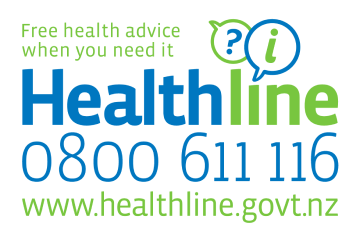Sharenting
Sharenting
Sharenting is when parents, caregivers or whānau (family) share information about their tamariki (children) on social media.
Key points about sharenting
- sharenting is when someone repeatedly shares information about their tamariki on social media
- sharenting comes with some risks, including possible cyberbullying, embarrassment and unwelcome attention from strangers
- parents should consider the long-term impact of their posts on their child's future
- if your child is old enough, ask them if it’s OK first before posting about them
- set clear boundaries with your friends and whānau around sharing content that includes your child
What is sharenting?
Sharenting is a blend of 'sharing' and 'parenting'.
Sharenting is when parents, caregivers or whānau repeatedly share sensitive information about their tamariki on social media. This can include sharing:
- photos
- videos
- personal stories
- life updates
Sharenting usually happens without someone understanding the possible or future impacts.
Many parents share their child’s milestone moments with friends and whānau. Posting the odd picture online of their child doesn’t come under the sharenting umbrella.
What are some of the risks of sharenting?
Digital footprint
When posting on social media, people often think they are creating a digital photo album of their child. In reality, they are creating a digital footprint for their child that anybody could have access to. Nothing online is 100% private.
Cyberbullying
Tamariki may be targets of cyberbullying when their information and photos are shared online.
Embarrassment
Some tamariki may find it embarrassing that some of their private childhood moments are shared on social media. Things like tantrums, toilet training and accidents can be embarrassing, especially as your child gets older.
Identity theft
Sharenting may put tamariki at risk of identity theft. This is where their personal information is stolen and used for fraudulent reasons.
Lack of control
Tamariki may feel that they have no control over their personal information when it is shared online. They can feel like they have no free will or privacy.
Unwelcome attention
Sharenting can lead to unwelcome attention from strangers online. This could lead to online grooming.
See the Netsafe page on advice for parents about online grooming for more information.
What to think about before sharenting
Parents have the responsibility to treat their children’s privacy with care, especially if they’re too young to consent. The following tips from Netsafe give you some things to think about before posting on social media.
Look ahead
Whenever you want to post something online about your child, think about the digital footprint you are leaving for them. Some photos and content may seem harmless now but could lead to something more negative later. It may affect their future. Think about how your child might feel about the content when they are older.
See the Netsafe page on digital footprints for more information.
Ask for permission
If a photo you are posting has other people’s tamariki in it - you need to ask their parents for permission before you post the photo online.
If your tamariki are old enough consider asking them if they’re okay for you to share it before you post a photo as well. Asking for permission before you post is a great way to teach them about respect and consent online.
Check your camera settings
When a device’s location settings are turned on, a photograph will have information about where it was taken. This information can be accessed if the metadata is not deleted before the image is posted online.
Consider disabling location settings on your camera and deleting the metadata before posting images online.
Check your privacy settings
If you are thinking about sharing a photo of your child on social media, check your privacy settings first. Some social media networks may have public or open privacy settings as the default settings. Check your privacy settings to make sure your posts can only be seen by the people you’d like to share it with.
Check your settings regularly as social media sites can evolve and change.
Think about who is in your network
Many people have people in their social media network that they aren’t close to anymore. Before you post content about your child, check to see if you are OK with everyone in your social media network seeing it. You may prefer to set up a private group chat to share it with just the people you want to share it with.
Consider personal information in the picture
Check any photos closely to make sure they aren’t revealing personal information about yourself or your child. Things to check for include:
- the name of your child's school
- uniform logos or crests
- your road or house number
Set boundaries with friends and family
Sometimes, people other than parents, such as friends and whānau, share images or information about tamariki online. Set clear boundaries with your friends and whānau around sharing content about your child online. Have some strategies in place for managing unauthorised posts from others.
This page last reviewed 18 August 2024.
Do you have any feedback for KidsHealth?
If you have any feedback about the KidsHealth website, or have a suggestion for new content, please get in touch with us.
Email us now